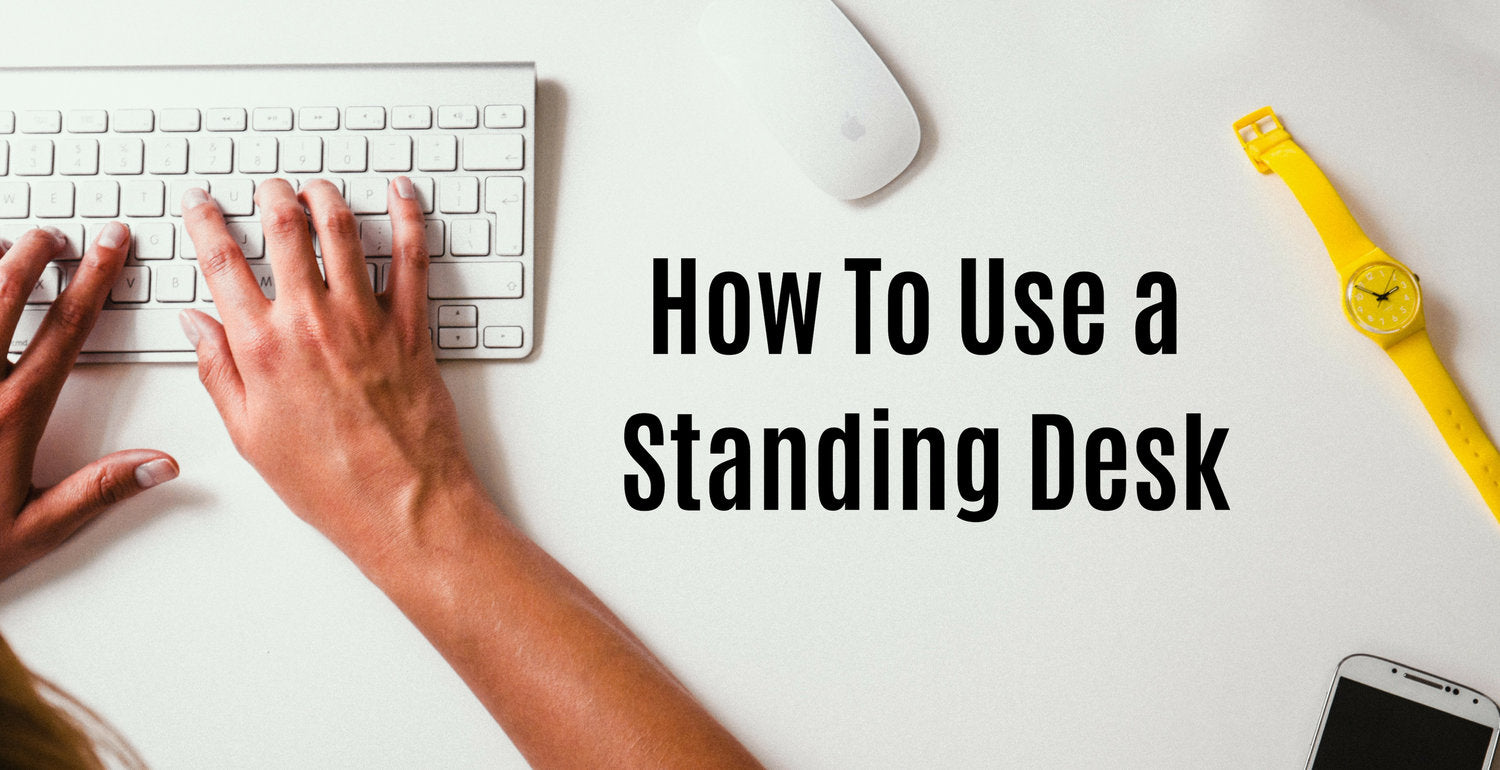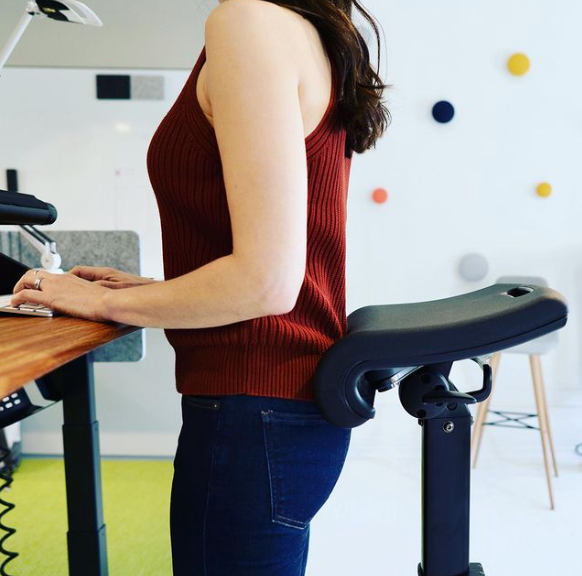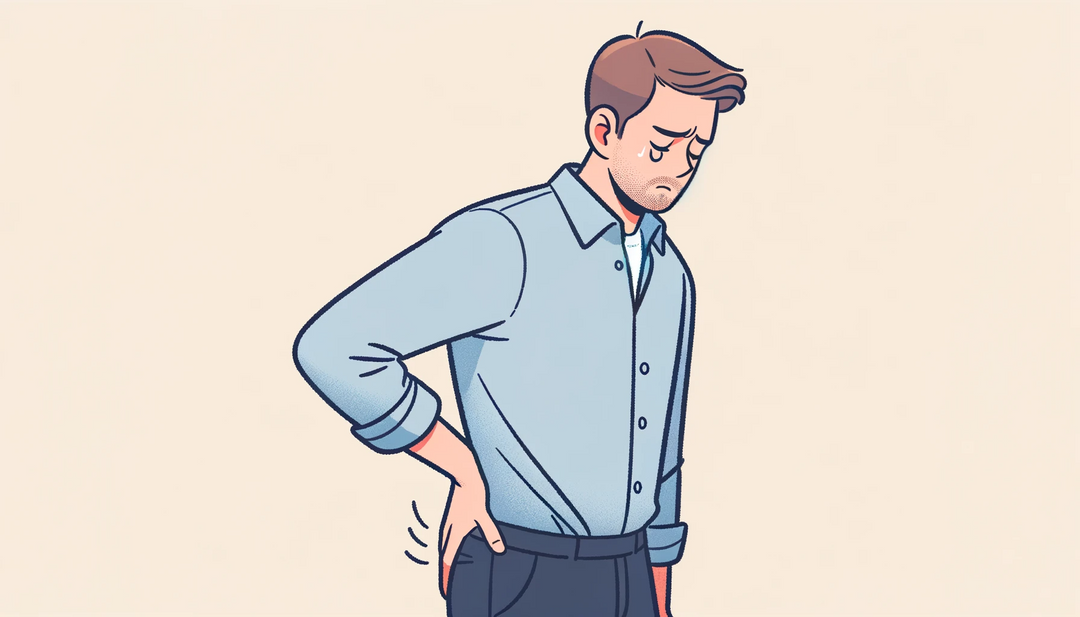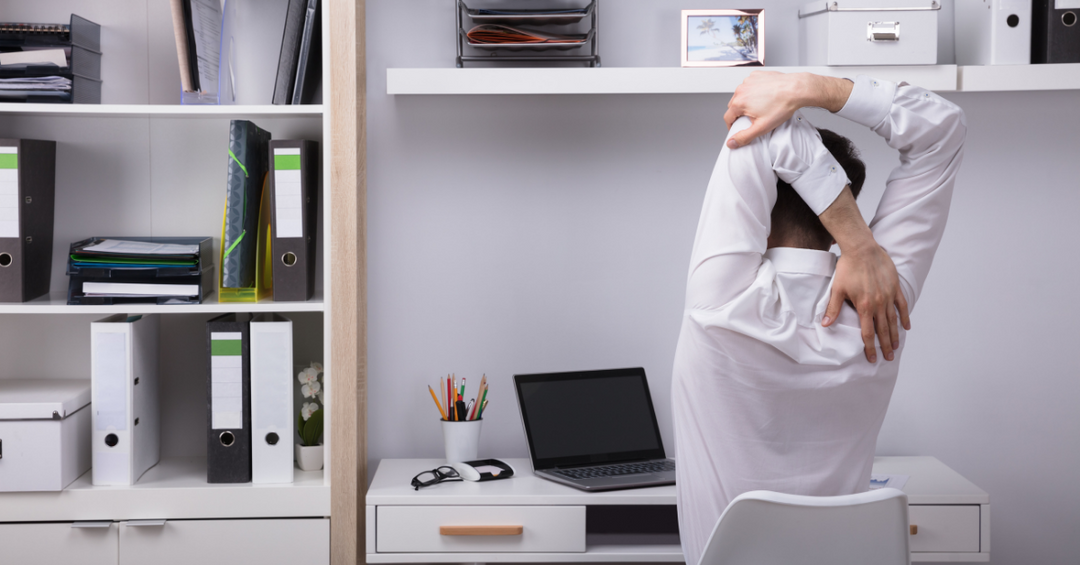How to Use A Standing Desk

Some people take to standing desks like ducks to water — while others are met with pain, fatigue, and/or a simple difficulty making the thing part of their day-to-day. If you’re a member of the latter group, these guidelines to finding that sweet spot with a standing desk are for you.
Don’t stand static, don’t sit static, don’t be static
There’s a limited notion that sitting is the killer, and standing is the cure. The fact is that sitting and standing both are not good for you if held for long periods of time (see: Sitting Disease). And movement is the cure.
Human beings evolved as a walking entity, exploring the world on our feet…" -James Levine, MD, author of Move a Little, Lose a Lot.
Note that here, we are talking about two forms of equally important movement:
-
Movement throughout the day away from the desk — i.e. stretching and walking breaks
-
Subtle movement within the body while working — i.e. micro-movement
Micro-movement prevents muscles from sitting static, which causes pain and fatigue. To achieve this subtle movement, try putting on some productivity or focus music to inspire a little sway in your body when working. Through movement, muscles are kept active, helping you maintain good posture as well.
The best posture is the next posture
Experiment with a footrest that pairs well with your workstation — to elevate one foot at a time and further alternate your working posture throughout the day.
Take breaks from the computer
Giving yourself mental and physical breaks from working at the computer does wonders to encourage movement and active posture while refreshing your body and mind. If you struggle to break away from the screen, check out our Ergo Impact App which sends customized reminders to change positions and to stretch throughout your day — think of it as your personal coach to help you make the adjustment of building more movement into your day.
Work on your posture
If you’ve got terrible posture from working sitting down all this time, this one will be tough at first. But good posture is critical to using a standing desk pain-free.
The core muscles should always be lightly activated when standing, as should your buttocks. Your knees should never be locked up, and your shoulders should never be hunched over.
If slouching is a problem, consider setting an alarm on your phone to go off every 30 minutes with a reminder to roll your shoulders back — resetting your body, and correcting any slouching that’s developed since your last reminder. It’ll be a pain in the rear end at first, but it’s the practical way to nip the slouching habit in the butt.
Check the ergonomics of your desk
-
Monitor: should sit just below eye level about 20-28 inches from your face at a 20-degree tilt backward, allowing for your neck to support at a natural angle, reducing strain on the back
-
Desk: When in typing position, your desk should meet or be stationed just below your elbow. Forearms should be parallel to the ground, at a perpendicular angle to your upper arm / forming an L-shape at the elbow joint. This form is vital in preventing RSI’s, especially in the wrist — which should always extend from the arm straight (never, ever strained at an angle)
-
Wrist tip: If you still experience strain, discomfort, or fatigue in the wrist after making these adjustments, look into an adjustable keyboard stand and/or wrist-supporting mouse pad
-
Shoulder/Arm tip: If you still experience pain or discomfort in your arm or shoulder(s) — especially if your dominant arm — consider an arm support
If you work at a laptop consider buying an external monitor -or- a laptop stand and external keyboard and mouse to achieve proper monitor height and proper keyboard height. If neither is possible, use the keyboard height as the reference point (making sure it’s at elbow height in typing position) for achieving the best ergonomics possible
Invest in a quality, supportive chair
Many standing desk converts go into the endeavor thinking they’ll be using the desk full-time, chair-free, only to be discouraged by the same pain and fatigue they experienced sitting. The fact is that standing can be just as harmful to you as sitting, if held for long periods of time without the proper chair or stool and without movement in the body. So the right chair is the necessary companion to a standing desk, allowing you to work standing up without pain and fatigue, for longer periods of time.
Look for a chair that meets the following criteria:
-
Provides support to body through multiple positions (from sitting to standing) — ideally, providing lumbar and gluteal support
-
Enables ‘neutral spine’ alignment (3 natural curves — cervical, thoracic, and middle — making an ‘S’ shape) through all supported posture positions
-
Highly adjustable to support your body’s size
-
Easily adjusts to its multiple positions, making movement through postures throughout the day seamless
Look for a chair that has a built-in anti-fatigue mat. The squishiness of the mat allows for subtle movement within the body (micro-movement), preventing strain and fatigue created by remaining static, as well as preventing more serious conditions like varicose veins and circulatory problems.
Wear the right shoes
We actually just wrote a whole blog post about this :)
Don’t lean onto your desk when tired!
In transitioning, don’t fall prey to the temptation to lean hunched over on your elbow if you get tired! This will cause pain and misalignment in the body, defeating the whole purpose of standing in the first place.
Consider instead a supportive standing desk chair like our LeanRite Elite, designed specifically to help people use their standing desks as intended — without pain or fatigue.
What’s great about our LeanRite is that it adjusts easily between positions to support numerous healthy working postures, from sit to stand. This gives you the support you need to move throughout your day, working as works best for you.
No matter what, don’t get discouraged and don’t give up! Give yourself time to make the change. If you’ve worked sitting down until now, this is a major change. But it is one full of wonderful benefits if taken on with patience and commitment. The key is paying attention to how your body feels as you experiment with your new setup and flow. If it feels better, you’re onto something.
So... how’s your transition to a standing desk going? Do you have any hacks you’ve discovered that we didn’t mention? Let us know in the comments :)






Leave a comment